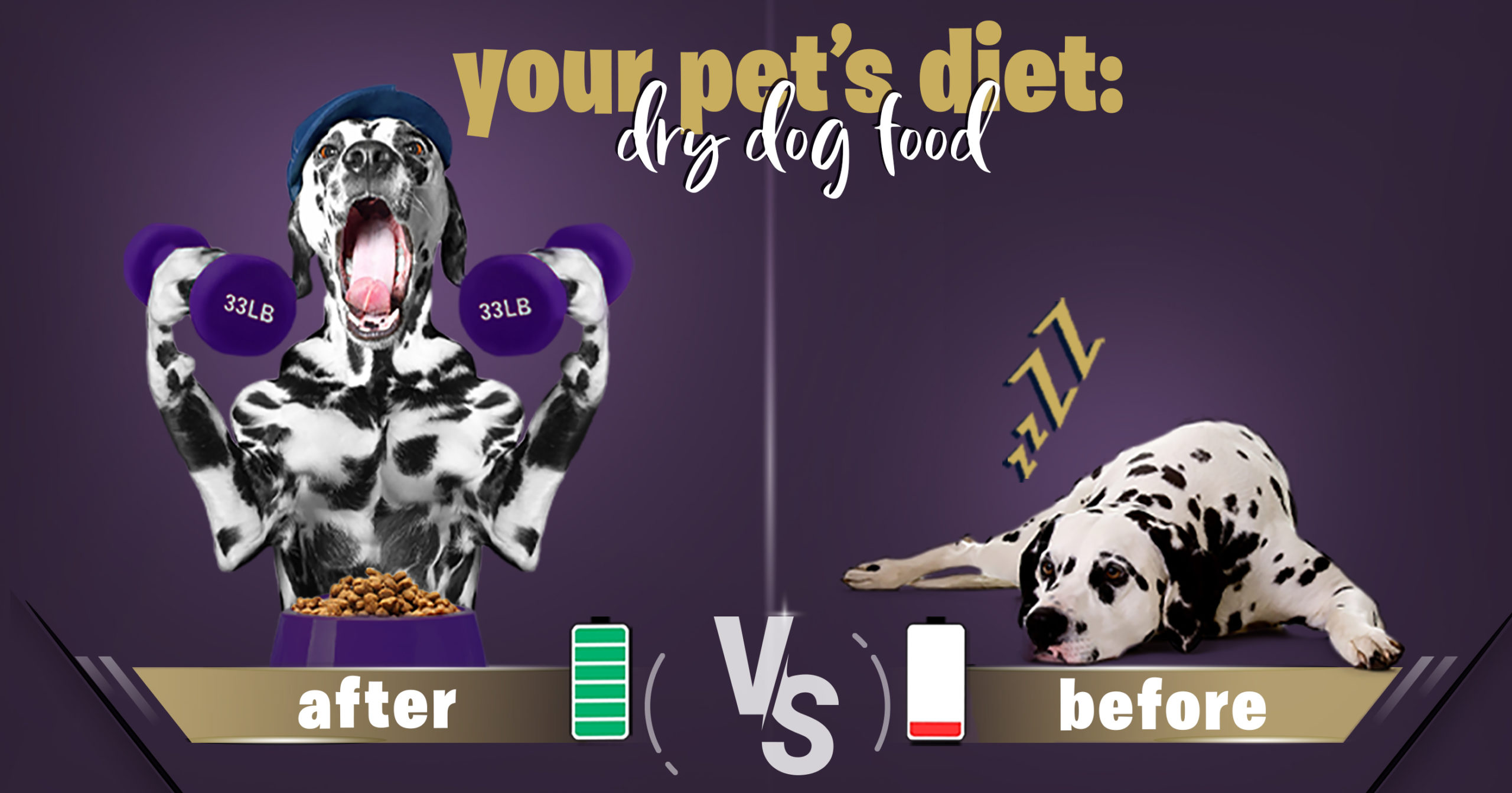
14 Mar Your pet’s diet: dry dog food
Your dog’s health is of utmost importance, one of the main factors to its health is its diet. Trying to find the best diet for your dog can be difficult, we know. Not only because of the number of brands there is but even the simple question of wet or dry food.
Here’s a quick rundown on one of those choices; dry food.
Benefits of dry dog food
- Dental health benefits: Dry food helps ensure your dog’s dental health by making it chew its food, which prevents tartar build-up and many diseases
- Simple: Most dry dog food provides feeding guidelines on the label based on a dog’s weight
- Easier to prepare: meal prep for your dog and portion without worrying it may spoil
- Shelf-stable: as mentioned in the point above, no need to worry about it spoiling, unlike wet food, dry food lasts longer and doesn’t need to be refrigerated
- Many options: there’s a variety of brands to choose from based on the nutritional needs of your dog and your budget, as well as age-specific options with the necessary nutrients
- Budget friendly: generally speaking, dry diets tend to be less costly
- Easy to take on-the-go or travel with: perfect for dogs and their owners with an active lifestyle
- Cleanliness: Even if your dog is a messy eater, dry food can be sweeped with ease
What should you look for in dry dog food?
- A specified animal protein
- An animal protein meal in a supporting role if a fresh meat is first on the ingredient list
- A “best by” date that’s at least six months away
- Whole vegetables, fruits, and grains
What to avoid in dry dog food?
- Artificial colors, flavors, or preservatives (i.e., BHA, BHT, ethoxyquin)
- Added sweeteners
- A “generic” meat or fat source
- Meat or poultry by-products
To buy dry food that fits these criteria visit our website here.



Sorry, the comment form is closed at this time.